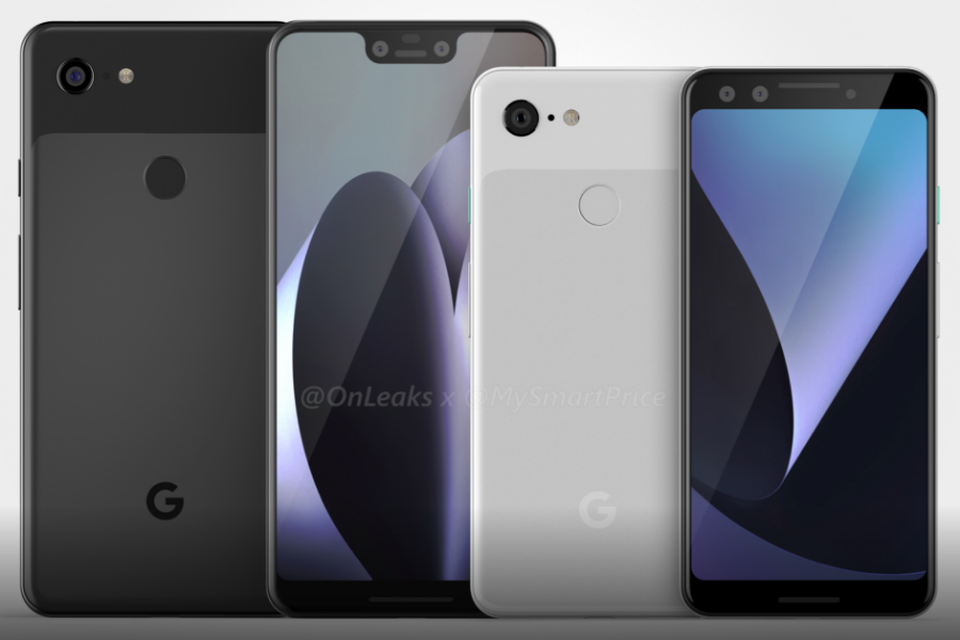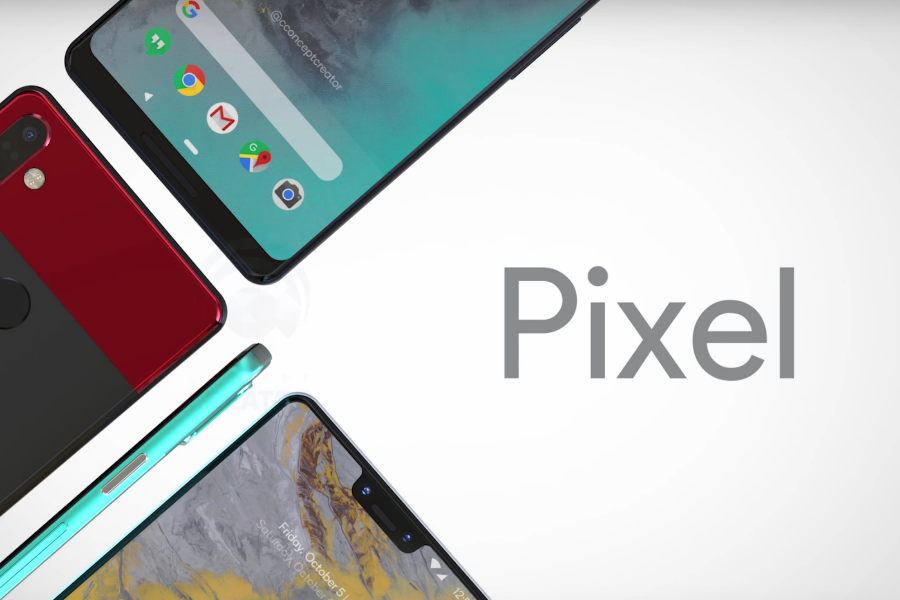Earlier this month, I did a story on a leak of Google’s upcoming flagship smartphone, the Pixel 3. The story received mixed views, with many readers commenting things like “speculation is useless” and “we never know until it’s confirmed by the company”. Well, almost all of the leaks have been confirmed once more. The renowned industry insider, Steve Hemerstoffer (also known as OnLeaks) has come up with high definition (HD) 360 degree renders of the Pixel 3 and its larger variant.

In my previous post, I wrote the Pixel 3 to have a size of 5.3 inches, which is only an inch off from what OnLeaks has confirmed it to be. To further up my happiness and pride, the Pixel 3 XL will have the exact same size I told it would be: 6.2 inches!
It’s important to note here that by keeping the XL at 6.2 inches, Google comes into direct competition with Samsung’s current flagship, the Galaxy S9+. While Google’s smartphone lineup might be lauded for delivering Android updates the quickest (since they develop the updates themselves), is that enough to compete with arguably the biggest smartphone manufacturer in the world?
One important thing here is the reduction in bezels. The Pixel 3 and Pixel 3 XL have a reduced bezel count, which helps in keeping the dimensions of the phone similar to the Pixel 2 and Pixel 2 XL. A few of the main reasons behind this is the race to conquer the market of completely bezel-less phones along with the drive to satisfy users who don’t prefer the “larger is better” narrative. Here are the exact dimensions of both the models, side by side:
- Pixel 2 – 145.7 x 69.7 x 7.8 mm
- Pixel 3 – 145.6 x 68.2 x 7.9 mm
- Pixel 2 XL – 157.9 x 76.7 x 7.9 mm
- Pixel 3 XL – 158 x 76.6 x 7.9 mm
The Pixel 3 will have the much-hated notch. This is the first time Google will introduce a notch in their smartphones. However, the notch will cause the Pixel 3 XL’s aspect ratio to be the same as that of the Pixel 2, i.e. 19:9.
Both the Pixel 3 and Pixel 3 XL will have the same speaker setup as before, i.e. a dual setup on the front. Additionally, the sim tray will be moved from the side of the phone to the bottom, right beside the Type-C port. The reasoning behind this is yet to be disclosed.
There are a few “controversies” surrounding the Pixel 3 and Pixel 3 XL. First, instead of an all-glass back that could’ve enabled wireless charging, Google is using a glass and metal back. While this may run well with the durability department, the trending technology field will definitely not be impressed by this. Moreover, both the Pixel 3 and 3 XL have a single-lens camera on the back. Almost all of its competitors have a minimum of a dual-camera setup on the back but that doesn’t necessarily mean that they’re better, right? After all, users should be more concerned with the end result than how many lenses are taking the picture, no?
Considering Google is going to hike up prices again, do you think the Pixel 3 and XL will be worth splashing $650 and $850 over?











